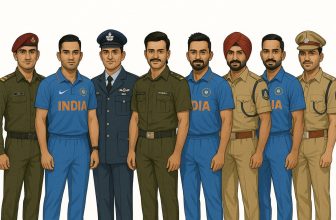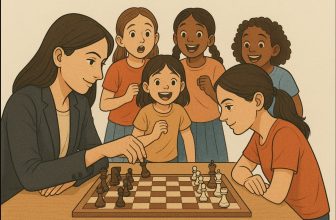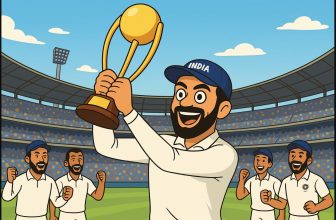India’s sporting history is filled with unique and thrilling games that once captured the imagination of people across the country. From daring physical contests to mind-bending strategy-based sports, many of these games were once as popular as cricket is today. However, with modernization, changing lifestyles, and the rise of structured sports leagues, many traditional Indian sports have faded into obscurity.
Some of these forgotten sports were adrenaline-fueled challenges of strength and endurance, while others showcased skill, agility, and teamwork. They were played in royal courts, bustling villages, and local fairs, shaping India’s rich sporting culture. Today, only a handful of these games survive in remote regions, while others exist only in old memories and stories.
In this post, we’ll take a deep dive into 15 of the most fascinating and crazy sports that were once widely played in India but have now disappeared from mainstream competition.
1. Mallakhamb – The Aerial Gymnastics of India
- What it was: Mallakhamb is a traditional Indian sport where athletes perform acrobatics, yoga postures, and aerial maneuvers on a vertical wooden pole or a suspended rope.
- Why it was crazy: The sport requires extreme flexibility, upper body strength, and precise coordination, making it a breathtaking display of skill and control.
- Why it faded: Once a staple in Indian wrestling training, it lost prominence as modern gymnastics and other fitness sports took over. Today, it is practiced mostly as an art rather than a competitive sport.
2. Kalaripayattu – The Deadliest Martial Art of India
- What it was: Kalaripayattu is one of the world’s oldest martial arts, originating from Kerala, and involved advanced combat techniques, weapons training, and acrobatic movements.
- Why it was crazy: Fighters engaged in lightning-fast duels, using swords, shields, spears, and even flexible swords (Urumi), making it one of the deadliest sports in history.
- Why it faded: British colonial rulers discouraged martial arts practices in India, leading to its decline. Though still practiced for self-defense and cultural preservation, it no longer enjoys widespread popularity as a sport.
3. Elephant Polo – A Sport for the Maharajas
- What it was: A variation of traditional polo, this game was played using elephants instead of horses, making it a grand spectacle among Indian royalty and British officers.
- Why it was crazy: Controlling an elephant while hitting a ball with a long-handled mallet required immense skill and coordination between the player and the mahout (elephant rider).
- Why it faded: The decline of royal patronage and increasing awareness of animal welfare issues led to the discontinuation of this extravagant sport.
4. Kho-Kho on Horses – A Mounted Chase Game
- What it was: A rare variation of Kho-Kho where players rode horses instead of running, adding an extra layer of difficulty and thrill.
- Why it was crazy: It combined speed, agility, and equestrian skills, requiring players to quickly change direction and tag opponents while on horseback.
- Why it faded: The costs and risks involved in training both players and horses made it impractical for widespread adoption.
5. Poshampa – The Human Trap Game
- What it was: A popular street game where two players formed an arch with their hands while others passed underneath to a rhythm, and the “gate” would close at the end of the song, trapping someone.
- Why it was crazy: More than a sport, it was a fun, suspense-filled game that tested quick reflexes and strategic timing.
- Why it faded: It was mostly played for amusement rather than serious competition, and modern forms of entertainment replaced it.
6. Vattam Kali – The Forgotten Bullfighting of India
- What it was: A unique bull-based game from Kerala, where participants engaged in a controlled contest of agility and bravery with bulls. Unlike Jallikattu, it focused on strategy rather than brute strength.
- Why it was crazy: It required competitors to outmaneuver aggressive bulls without harming them, making it both thrilling and dangerous.
- Why it faded: Strict animal welfare regulations and changing agricultural practices led to its decline.
7. Thoda – The Archery Battle Sport
- What it was: A traditional martial arts-based archery sport from Himachal Pradesh, where two teams shot wooden arrows at designated target points on each other’s bodies.
- Why it was crazy: Unlike modern archery, this sport involved moving targets—actual human participants—making it a test of precision and reflexes.
- Why it faded: The sport lost its competitive status and became more of a cultural showcase in regional festivals.
8. Lagori – The Seven Stones Game
- What it was: A street game where players aimed to knock over a stack of seven stones with a ball while the opposing team tried to prevent them from rebuilding the tower.
- Why it was crazy: The game combined speed, dodging, and teamwork in an intense face-off.
- Why it faded: Urbanization and the lack of open spaces made it difficult to play, leading to its decline.
9. Insuknawr – The Mizo Strength Sport
- What it was: A traditional strength-based sport in Mizoram, where two players pushed a long wooden rod against each other, testing their endurance and power.
- Why it was crazy: It was like arm wrestling but with an entire body struggle, requiring immense force and balance.
- Why it faded: Other strength-based competitive sports gained more recognition, leaving Insuknawr behind.
10. Kancha – The Precision Marble Game
- What it was: A popular game where players aimed to knock out marbles from a circle using their own marbles.
- Why it was crazy: Mastering Kancha required sharp aiming skills and patience, making it a strategic yet highly competitive game.
- Why it faded: Video games and digital entertainment replaced traditional street games like Kancha.
11. Pittu Garam – The Intense Lagori Variant
- What it was: A tougher version of Lagori, where players actively chased and hit each other with a ball after knocking over the stone stack.
- Why it was crazy: The aggressive nature of the game made it highly competitive, leading to occasional injuries.
- Why it faded: Concerns over safety and injuries led schools and communities to discourage it.
12. Gilli Danda – The Indian Baseball
- What it was: A bat-and-ball game where players hit a small wooden stick (Gilli) into the air and struck it again to send it flying.
- Why it was crazy: It required extreme hand-eye coordination and quick reflexes, making it challenging and exciting.
- Why it faded: Cricket’s rising popularity overshadowed this indigenous game.
13. Chhuppan Chhuppai – Competitive Hide and Seek
- What it was: A structured version of hide-and-seek played in some regions as a serious sport.
- Why it was crazy: It involved complex rules, large playing areas, and teams strategizing escape and capture.
- Why it faded: The formalization of athletics and structured sports led to its decline.
14. Vallam Kali – The Traditional Boat Racing Sport
- What it was: Kerala’s famous snake boat races were once intense inter-village competitions that lasted beyond festivals.
- Why it was crazy: Teams trained for months to perfect synchronization, with hundreds of rowers moving in unison.
- Why it faded: Today, it is mostly a tourist attraction rather than a competitive sport.
Closing Remarks
India has seen the rise and fall of many unique sports, some of which were once deeply embedded in its culture but have now been forgotten. From Mallakhamb’s gravity-defying acrobatics to the intense bull-facing game of Vattam Kali, these sports were thrilling, skill-based, and, in some cases, outright bizarre.
Martial arts like Kalaripayattu, strategic battle formations like Chakravyuh, and strength-based games like Insuknawr all had their glory days but eventually lost out to modern athletic pursuits. While some, like Lagori and Gilli Danda, still exist in pockets of the country, they are no longer part of mainstream sports culture.
As India embraces new sports and global competitions, these traditional games serve as a reminder of the country’s rich and diverse athletic heritage. Perhaps, with renewed interest, some of these lost games could be revived for future generations to enjoy.
Would you try any of these sports if they were revived? Let us know!





